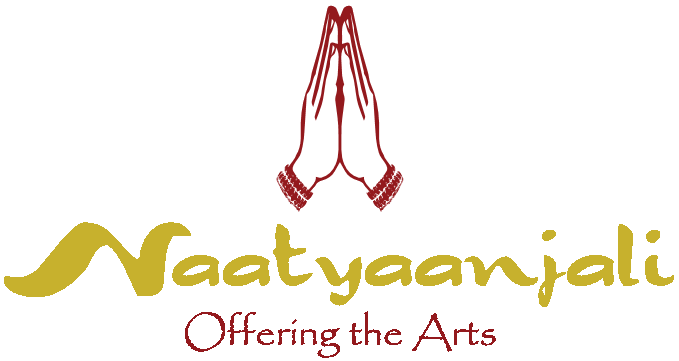Karanas
Nritta can be broadly divided into Chari, Karana, Angahara and Mandala and defined in Natya Shastra as:
- One-leg movement are called Chari.
- Two-leg movements are Karana.
- 3 Karanas make a Khanda.
- 3 to 4 Khandas make a Mandala.
- 4 to 9 Karanas make a Angahara.
- 4 to 5 Angaharas also make a Mandala.
108 Karanas and 32 Angaharas are defined in Natya Shastra and are the intrinsic element of the margi style.
108 Karanas are beautifully shown in the video below:
“Natya Sashtra states that Karanas are the framework for the “margi” (pan-Indian classical) productions which are supposed to spiritually enlighten the spectators, as opposed to the “desi” (regional folk or pop dance) productions which can only entertain the spectators. One who performs well this Karana dance created by Maheswara will go free from all sins to the abode of this deity states the Natya Sashtra.”
– http://en.wikipedia.org/wiki/Karana_%28dance%29
In addition to simply using written works and performances, the beauty of dance can be seen in the statutes at temples. These sculptures are mainly depicting the Karanas, or dance postures. In Hindu temples, the presiding deity is to be offered sixteen forms of hospitality. Dance is one of these sixteen forms, and Devadasis, or servants of God, would dance at temples for this reason. One main temple containing the aforementioned sculptures is the temple of Chidambaram. This temple is located close to Pondicherry.
Adavus
The rhythmic body movements along with hand gestures are called adavus. If dance is a language, Adavus are the alphabets. These are rhythmic body movements along with hand gestures. A number of adavus constitutes a jaathi (few steps together). A jaathi would generally end with a muktaya adavu (the finishing or last set of steps). Adavus are done in 3 speeds. There are different classes of Adavus in different schools of Bharathanatyam.
- Tattadavu (striking with foot, flat on the floor with hands on the waist)
- Thaiyaa thai – R1 L1
Thaiyaa thai – L1 R1 - Thaiyaa thai – R2
Thaiyaa thai – L2 - Thaiyaa thaiyaa thai – R3
Thaiyaa thaiyaa thai – L3 - Thaiyaa thaiyaa thaiyaa thai – R4
Thaiyaa thaiyaa thaiyaa thai – L4 - Thaiyaa thaiyaa thaithaitham – R1 R1 R3
Thaiyaa thaiyaa thaithaitham – L1 L1 L3 - Thai thai tham Thai thai tham – R3 R3
Thaiyaa thaiyaa thai thai tham – L3 L3 - Thai thai thad thad thai thai tham – R3 L1 R3
Thai thai thad thad thai thai tham – L3 R1 L3 - Thai thai thai thai thit thit thai – R1 L1 R1 L1 R1 L1 R1
Thai thai thai thai thit thit thai – L1 R1 L1 R1 L1 R1 L1
Legend:
R – right
L – left
1 – strike 1 time
2 – strike 2 times
3 – strike 3 times
4 – strike 4 times
Please note that different schools teach different adavus. As such, from Naatadavu onwards, please confirm with your Teacher on the order of the steps.
- Naatadavu (striking with heel / toe, hands in thripathaka hasta at shoulder level)
- Thaiyum Thatta Thaiyum Thaa
Thaiyum Thatta Thaiyum Thaa - Thaiyum Thatta Thaiyum Thaa
Thaiyum Thatta Thaiyum Thaa - Thaiyum Thatta Thaiyum Thaa
Thaiyum Thatta Thaiyum Thaa - Thaiyum Thatta Thaiyum Thaa Thaiyum Thatta Thaiyum Thaa
Thaiyum Thatta Thaiyum Thaa Thaiyum Thatta Thaiyum Thaa - Thaiyum Thatta Thaiyum Thaa
Thaiyum Thatta Thaiyum Thaa - Thaiyum Thatta Thaiyum Thaa Thaiyum Thatta Thaiyum Thaa
Thaiyum Thatta Thaiyum Thaa Thaiyum Thatta Thaiyum Thaa - Thaiyum Thatta Thaiyum Thaa Thaiyum Thatta Thaiyum Thaa
Thaiyum Thatta Thaiyum Thaa Thaiyum Thatta Thaiyum Thaa - Thaiyum Thatta Thaiyum Thaa Thaiyum Thatta Thaiyum Thaa
Thaiyum Thatta Thaiyum Thaa Thaiyum Thatta Thaiyum Thaa
- Paraval Adavu (moving step with pathaka hasta)
- Thaa Thai Thai Tha
Thit Thai Thai Tha - Thaa Thai Thai Tha Thit Thai Thai Tha Thaa Thai Thai Tha Thit Thai Thai Tha
Thaa Thai Thai Tha Thit Thai Thai Tha Thaa Thai Thai Tha Thit Thai Thai Tha - Thaa Thai Thai Tha Thit Thai Thai Tha
Thaa Thai Thai Tha Thit Thai Thai Tha - Thaa Thai Thai Tha Thit Thai Thai Tha
Thaa Thai Thai Tha Thit Thai Thai Tha - Thaa Thai Thai Tha Thit Thai Thai Tha
Thaa Thai Thai Tha Thit Thai Thai Tha
Other adavus are listed below:
- Kattadavu
- Kudittamettadavu
- Maiadavu
- Mandiadavu
- Thath thai tham adavu
- Theermanam adavu
- Paicchal adavu
- Thai thai thath tha
- Thangidu thath tha dhinna
- Kartari adavu
- Sarukkal adavu
- Katthi adavu
- Thatti mettadavu
- Nadai
- Ardi, etc.
There are up to 12 sub-classes in most adavus, making it up to 150 adavus. Only about 40-50 adavus are generally practised by an average Bharatanatyam dancer.
Adavus were a later addition of Desi (folk dance) elements and in the past few centuries gradually replaced the 108 karanas.
Jaathis
Jaathi refers to the variations in the numbers of counts in a cycle of a thalam (rhythm). There are 5 jaathis.
- Thisram – Tha Ki Ta [3 counts]
- Chatusram – Tha Ka Dhim Mi [4 counts]
- Khandam – Tha Ka Tha Ki Ta[ 5 counts]
- Misram – Tha Ki Ta Tha Ka Thim Mi [7 counts]
- Sankeernam – Tha Ka Dhim Mi Tha Ka Tha Ki Ta [9 counts]


It was really very helpful for me…
Thank you so much….I loved it…..😊😊
Good information thank you.